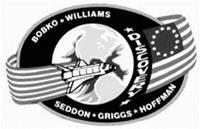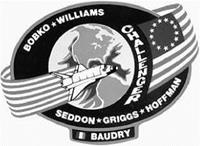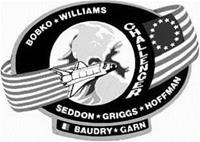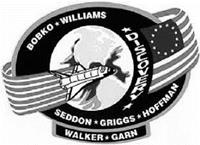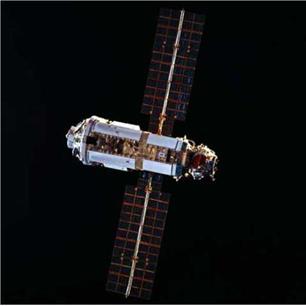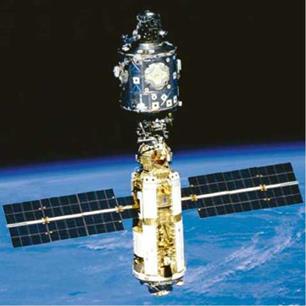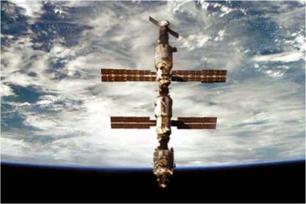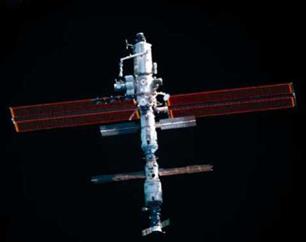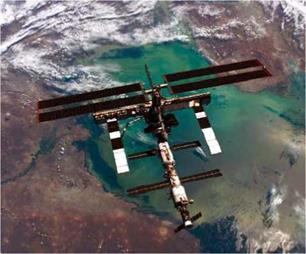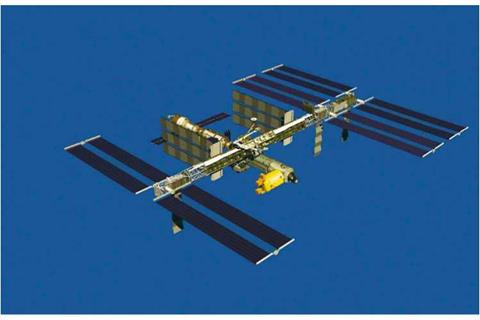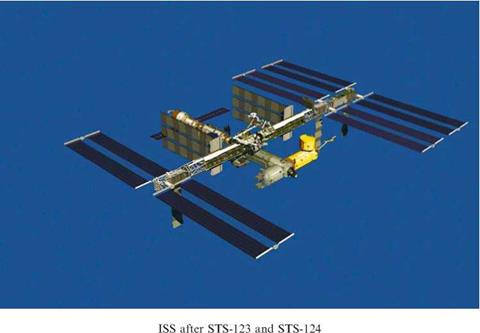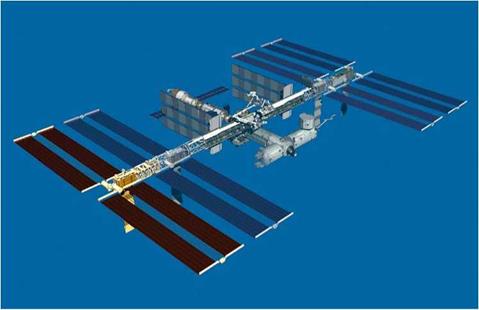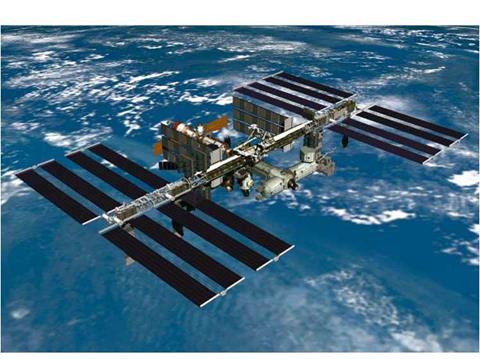Mission patches
Mission patches have been part of manned space flight for such a long time that it is easy to forget their origins. It is also easy to think of them as being predominantly an American initiative, but this not so.
The Mercury astronauts wore the first patches, but they were simply the insignia of NASA. Instead of mission specific patches, these pioneering astronauts gave their spacecraft names. The practice began when Alan Shepard named his spacecraft Freedom 7, the number 7 came not from the number of astronauts in the group as many have thought, but simply from the fact that this was the seventh spacecraft built. Subsequent crews named their craft with the seven suffix, and instead of the simple stencilled names on the spacecraft sides that Shepard and Grissom had, they came up with designs, logos if you like for their missions, with the help of an artist. These designs were much later made into woven patches, but they never existed in that form at the time of the missions.
Once the first crew had been announced for the Gemini program, Mercury veteran Gus Grissom, who would command the flight of Gemini 3, naturally wanted to continue the tradition of naming his spacecraft. He came up with the name “Molly Brown” after the Broadway musical of the time “The Unsinkable Molly Brown”, clearly this was a reference to his Mercury flight that had ended up sinking. NASA officials thought that this name was inappropriate, and had been privately thinking for a while that this whole naming thing was getting out of hand, so they banned Grissom from using this name and demanded that he come up with an alternative. When he revealed that he rather liked the sound of “Titanic”, they banned the future naming of spacecraft forthwith. NASA officials thought that the whole thing had been put to bed, but the next crew for Gemini 4 also wanted to commemorate their flight in some way, they had intended to name the spacecraft “American Eagle”, but the recent banning had put paid to that. Instead, they decided that they would wear U. S. flags on the shoulders of their spacesuits, and every U. S. crew since then has done the same.
Mission patches officially came into being with the flight of Gemini 5, the crew of Gordon Cooper and Peter Conrad had already done battle with NASA Headquarters about naming their craft, and when they were also turned down they came up with the idea of a personal mission patch. It reflected the idea of U. S. military personnel having individual unit patches, and since the astronauts considered each crew to be a unit it seemed appropriate for each mission to have a patch. Conrad’s father-in-law came up with the idea of a covered Conestoga wagon as part of the design, the idea being that it reflected the early pioneering spirit, and Cooper and Conrad added the slogan “8 Days or Bust’’ since that was the intended duration of their flight. Unfortunately, Jim Webb the then NASA Administrator, did not share the crew’s enthusiasm, in fact it’s fair to say that he lost his sense of humour over the whole thing. Both crewmembers pointed out that it was perfect for morale for the whole team of people involved in the flight to be able to wear such a patch. Webb saw their point but insisted that the slogan be covered up until the flight had successfully flown for that long, only at the end of a successful eight-day flight could they reveal it. The mission patch was here to stay, but NASA Headquarters insisted that they approve the design of every patch before it was made public, a practice that continues today. The naming of spacecraft made a brief re-appearance during the Apollo program when there would be two separate spacecraft flying at the same time, which needed to be identified by radio. Again, NASA Headquarters had to approve these names in advance.
All subsequent mission patches have featured the names of the crew, and imagery appropriate to the nature and objectives of the flight. Only six patches have appeared that did not contain any names at all. Gemini 7 and 10, Apollo 11 and 13, and much more recently, ISS Expedition 14, 15, and 16. This is becoming a more common practice with ISS missions, as many now routinely include several changing crew members. Expedition 15 has six different versions with different crew names, and this situation needs to be avoided in the future.
The appearance of names on patches has caused some headaches in the past, and indeed continues to do so today. In the early days of the space shuttle program, some crews decided to add the name of the particular shuttle that they were going to fly on board. Of course, this was a problem if the mission scheduling changed, and they were assigned a different shuttle, the patches would have to be changed. This particular problem came to a head with the flight of 41-E/41-F, which was originally assigned to fly Discovery, it was then changed to Challenger and renamed 51-E, and in addition, a payload specialist was added to the crew, his name was added as a tab sewn onto the bottom of the design. Unfortunately, for the patch manufacturer who had just completed these changes, a seventh crewmember was added, so they cut off the existing tab and replaced it with a new one with two names. This was not the end of the nightmare, however, since 51-E was then canceled, and crews jumbled around, the original core crew of 51-E remained, now given the flight 51-D, but one of the payload specialist had changed, and so had the space shuttle, it was to be Discovery again. The good news was that the manufacturer used the original 41-F Discovery patch, with a new tab sewn to the bottom. Because of all of these changes, 51-D was the last flight for quite some time that included the name of the
|
41E-F patch |
|
51E Baudry patch |
|
51E Baudry and Garn patch |
|
51D Walker and Garn patch |
shuttle, and all payload specialists tended to have their names on separate sewn on tabs.
On one occasion, the first shuttle flight to rendezvous with Mir, STS-63, caused some patch problems when one crewmember, Janice Voss, got divorced part-way through the approval cycle, the official patch originally said Ford, but was changed to Voss before any were produced.
The Soviet Union had also adopted the tradition of producing patches, but in a slightly different way to their American counterparts. In the Soviet system, cosmonauts have their own personal call sign, which they generally maintain during their entire career, the call sign of the commander of the flight is adopted as the main call sign for the mission. Therefore, patches have tended to be of a personal nature rather than a mission specific one. This has changed over the years, particularly when there is some special significance to the mission, for instance all of the Interkosmos international flights had a mission patch usually including the flag of the nation involved. The first known use of a personal patch was that used by Valentina Tereshkova during her Vostok 6 mission in 1963, it consisted of a white dove, and the letters СССР. In fact, this was the first use of a mission patch by anyone, the U. S.A. not officially introducing them until Gemini 5 in 1965. Over the years, Soviet crews have worn a number of standard patches, many of them produced by Zvezda, who are the manufacturers of the crew’s spacesuits. The patches produced by Zvevda have displayed the company’s logo and the Russian word for Salyut, or Mir, and now
|
Vostok6—Tereshkova patch |
ISS. Zvevda also produced the patch that was first worn by Alexei Leonov during his pioneering spacewalk, and later by the crew of Salyut 1. Since those early days, Soviet and Russian mission patches have been something of a mixture; many cosmonauts have carried their own personal patches, as well as patches that are specific to their mission. Many patch collectors have recently become dismayed at the sheer number of different patches that become available for just one mission. The more recent Soyuz taxi missions to the ISS have featured customized designs for each cosmonaut, often the same basic design, but with a different colour border for each crewmember.
Quite how patches will continue to evolve is unclear, Orion will carry crews of six at a time to the ISS, and the ISS standard crew complement is due to grow to six crewmembers at a time, it seems likely that mission specific or expedition patches may be on the decline, but astronaut/cosmonaut personal patches will increase. Time will tell.
|
Zarya after launch |
|
Zarya and Unity after STS-88 |
|
Zarya, Unity, and Zvezda |
|
ISS after STS-97 adds the first solar arrays |
|
ISS after the Destiny lab and Quest airlock were installed |
|
ISS after the STS-114 return to flight mission |
|
ISS after STS-116 added more solar arrays |
|
ISS after STS-117 |
|
|
|
|
|
|
|
|
|
|
|
ISS after Node 3 is attached
|











